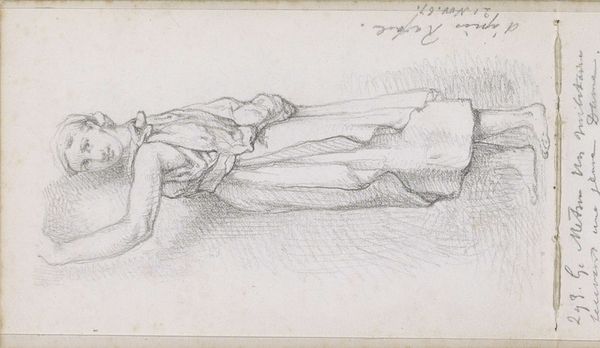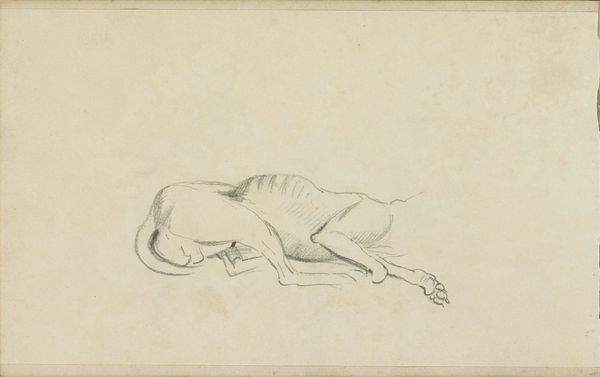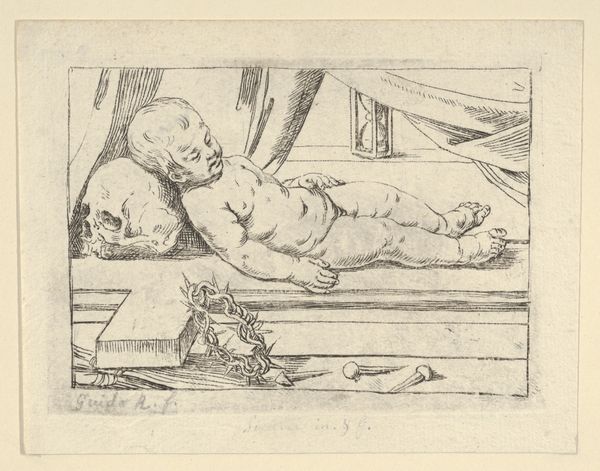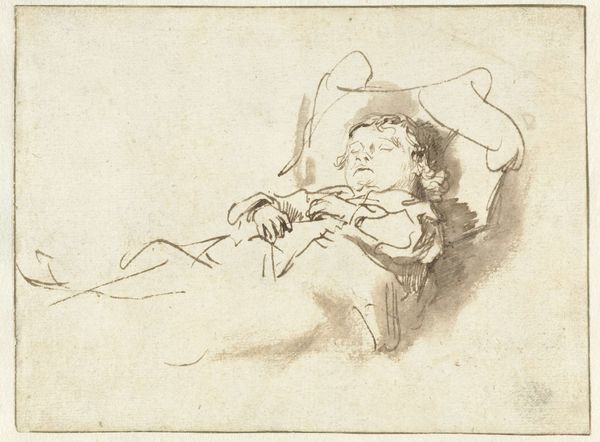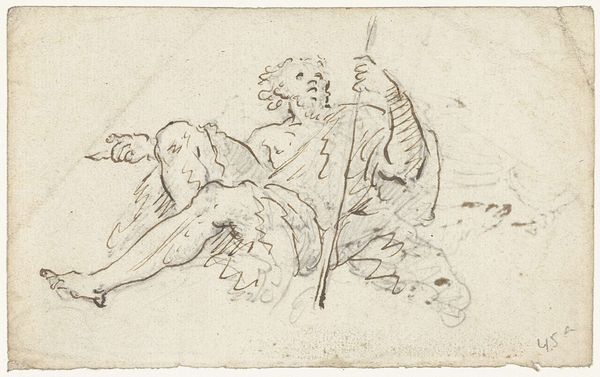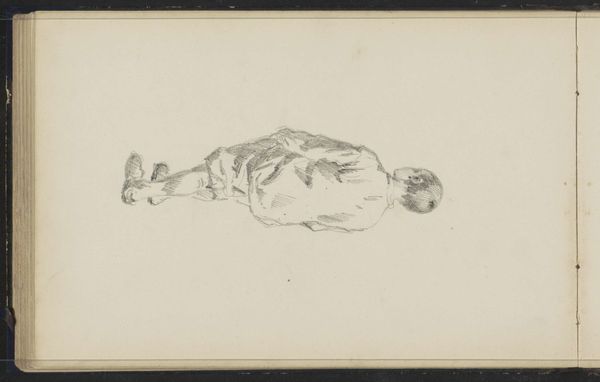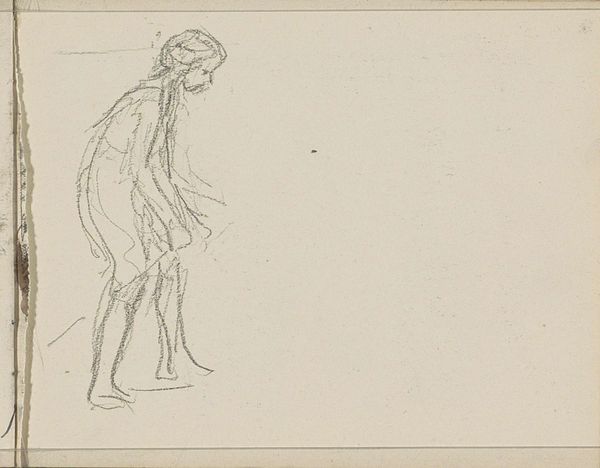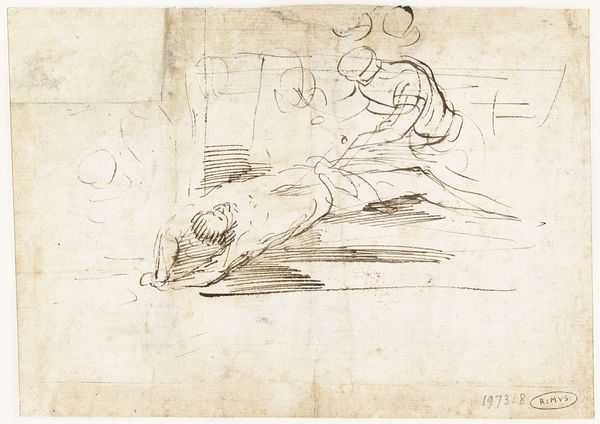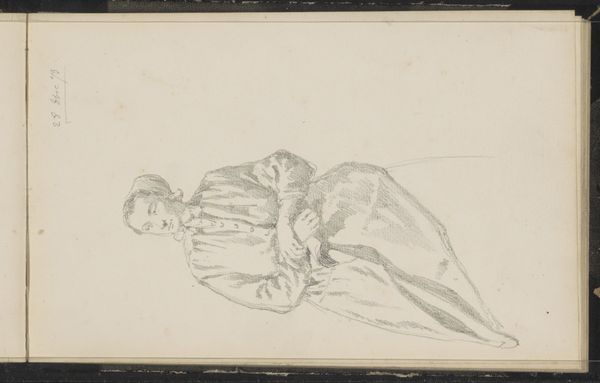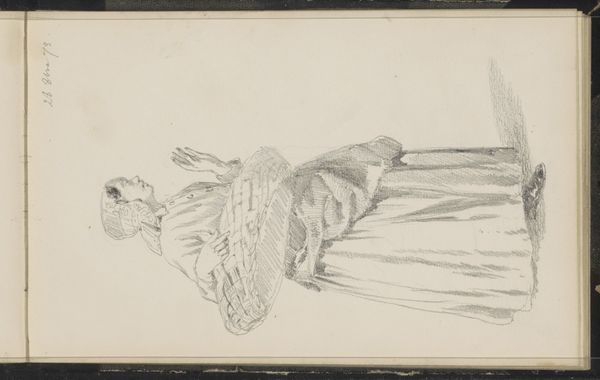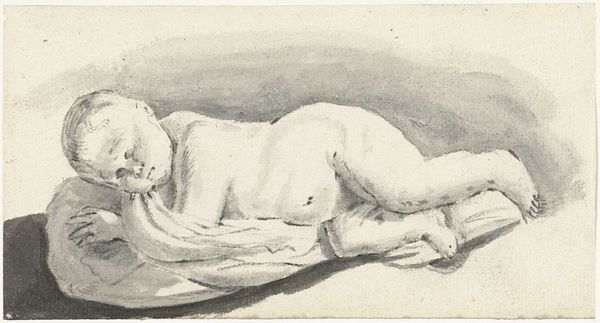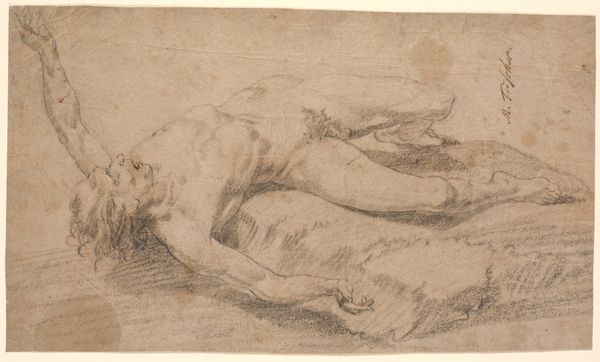
Copyright: Public Domain: Artvee
This is James Ensor's etching “My Portrait in 1960,” made in 1888. But the title is a misnomer. It's not really about 1960. It's about now. Ensor lived and worked in Belgium, a country which was politically conservative and socially hidebound, despite its reputation for producing progressive art. Here, Ensor mocks the conventions of bourgeois portraiture and academic art. Instead of portraying himself as a respectable member of society, he presents himself as a skeleton, a memento mori reminding us of death's inevitability. Ensor was associated with the Brussels-based avant-garde group Les XX, who sought to challenge the established art world. Ensor’s grotesque imagery, his interest in the macabre, and his rejection of traditional artistic values made him a controversial figure in his own time. To fully understand Ensor’s art, one must research the social, cultural, and political context in which he lived. Only then can we appreciate the full extent of his critique of Belgian society and its institutions.
Comments
No comments
Be the first to comment and join the conversation on the ultimate creative platform.
